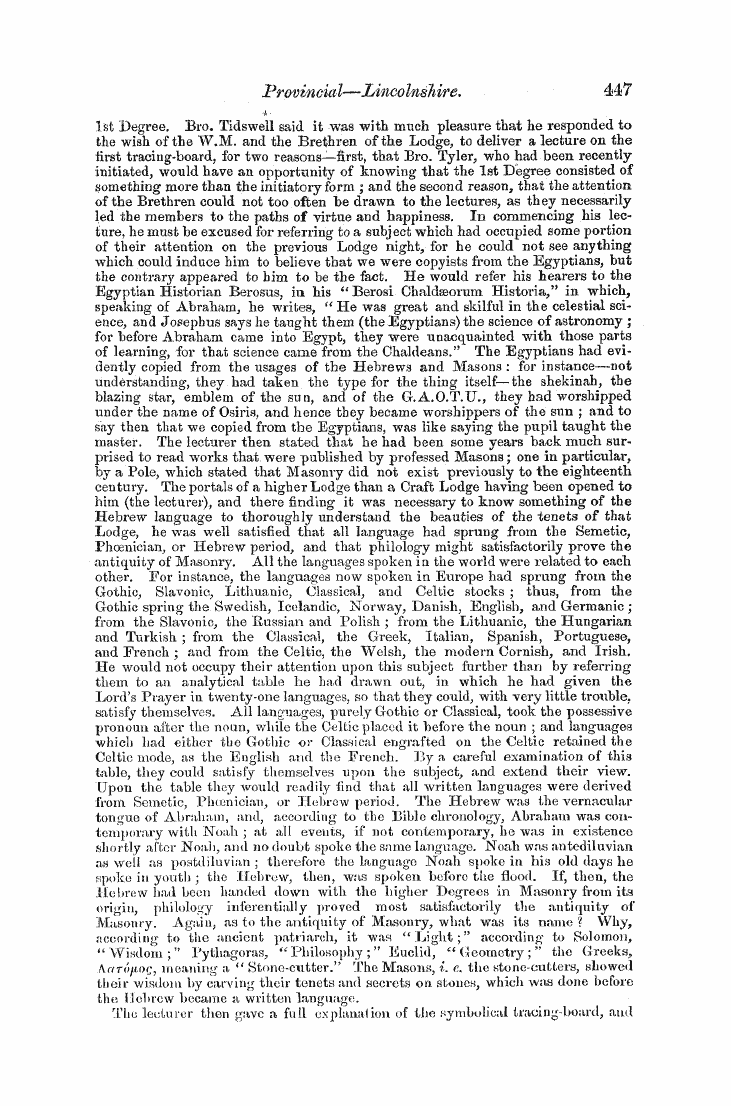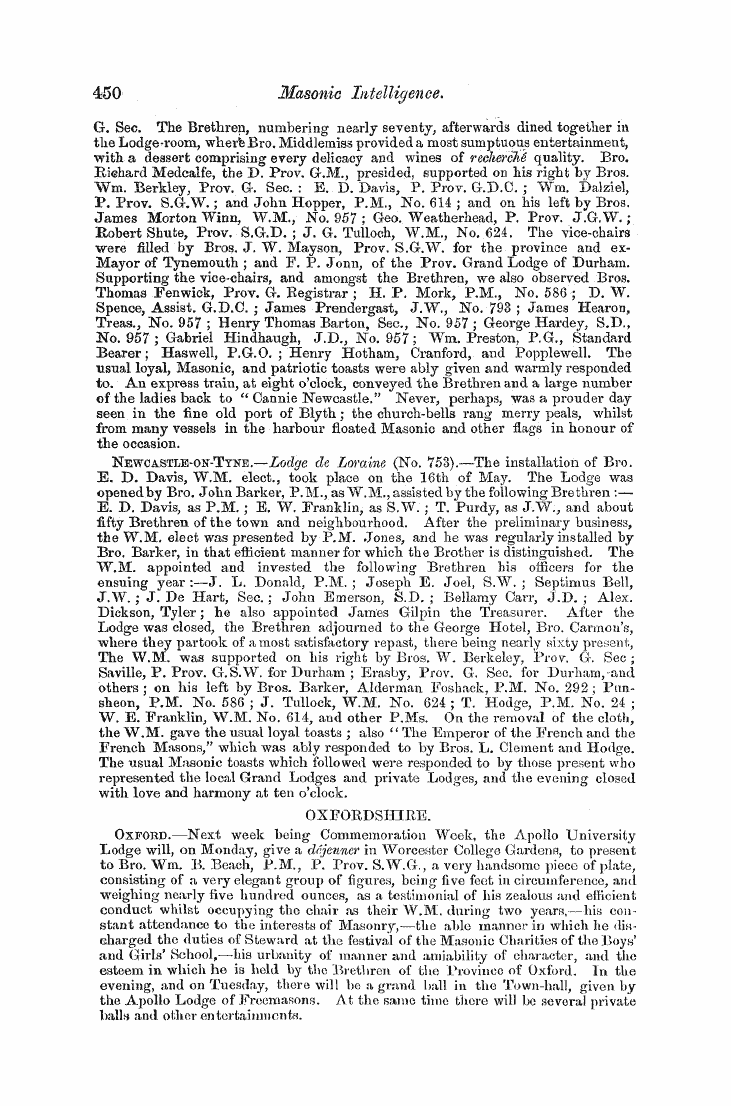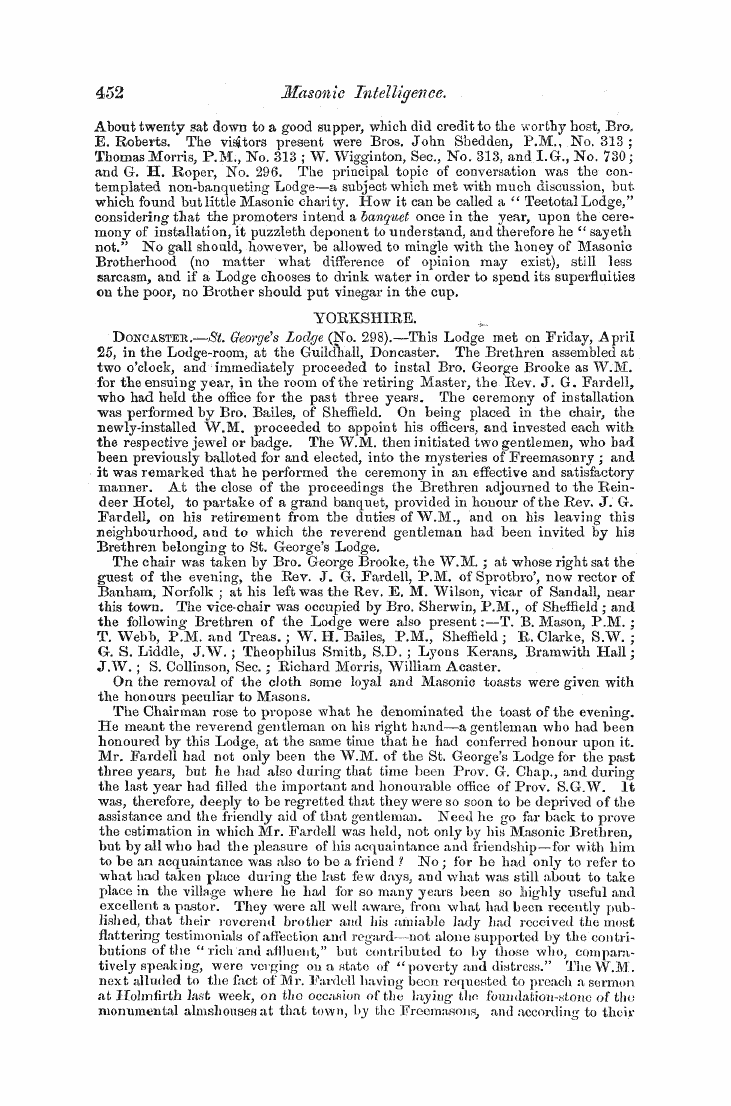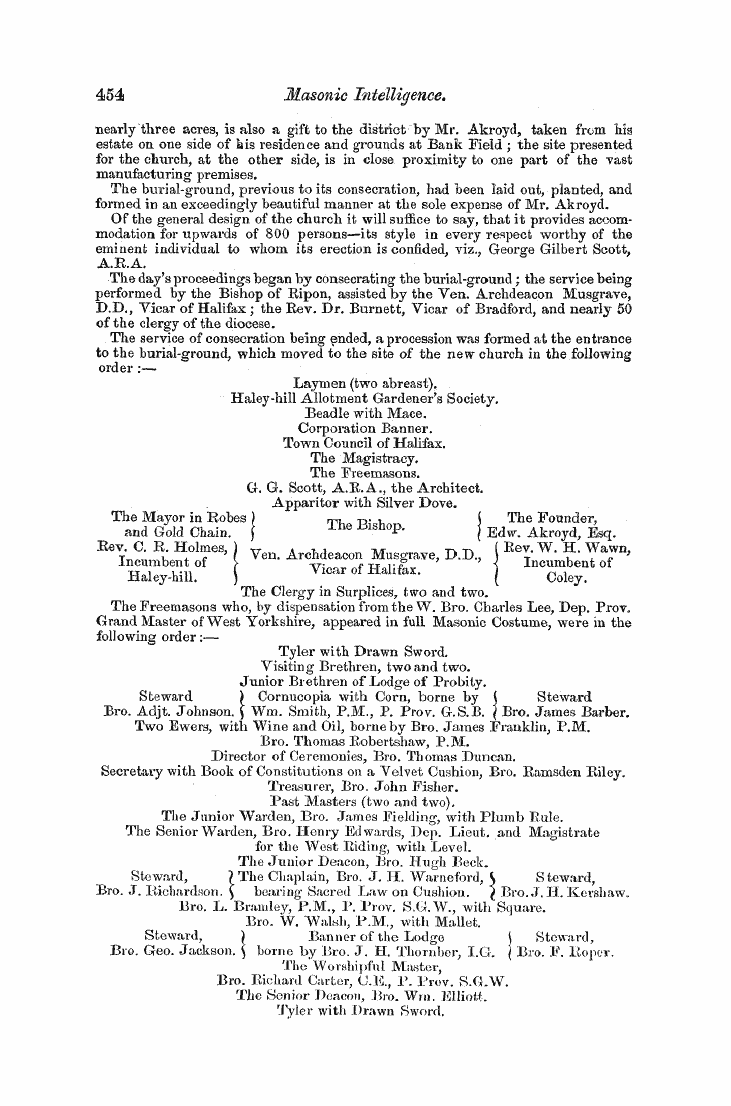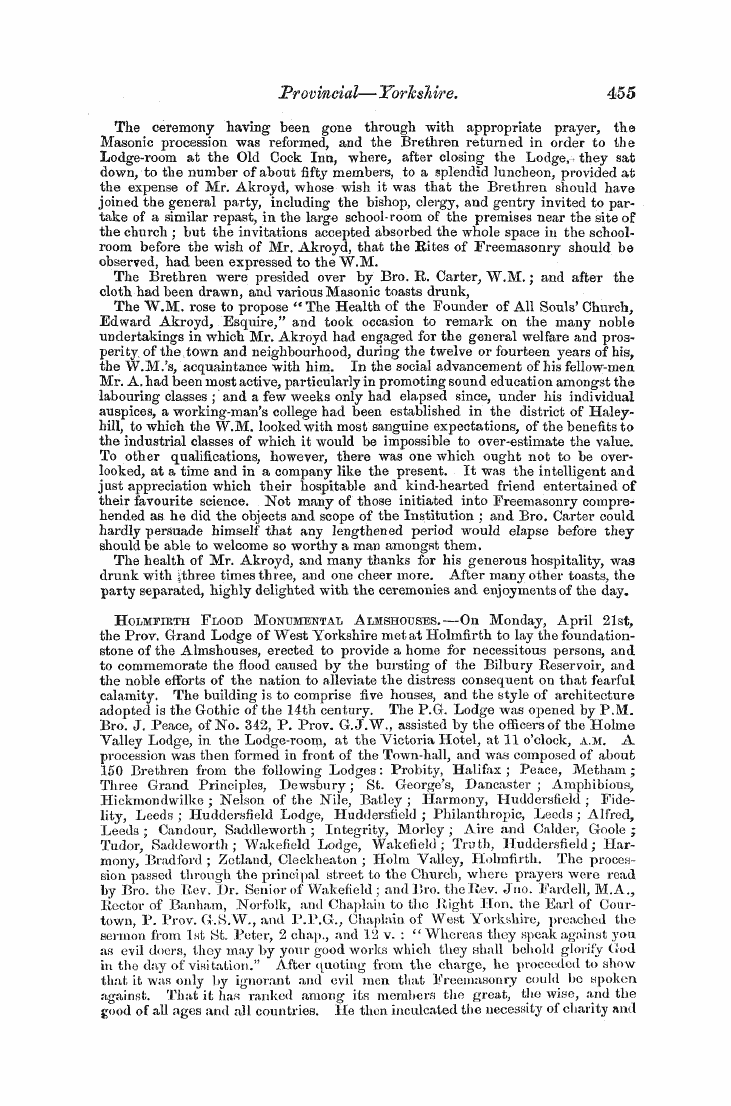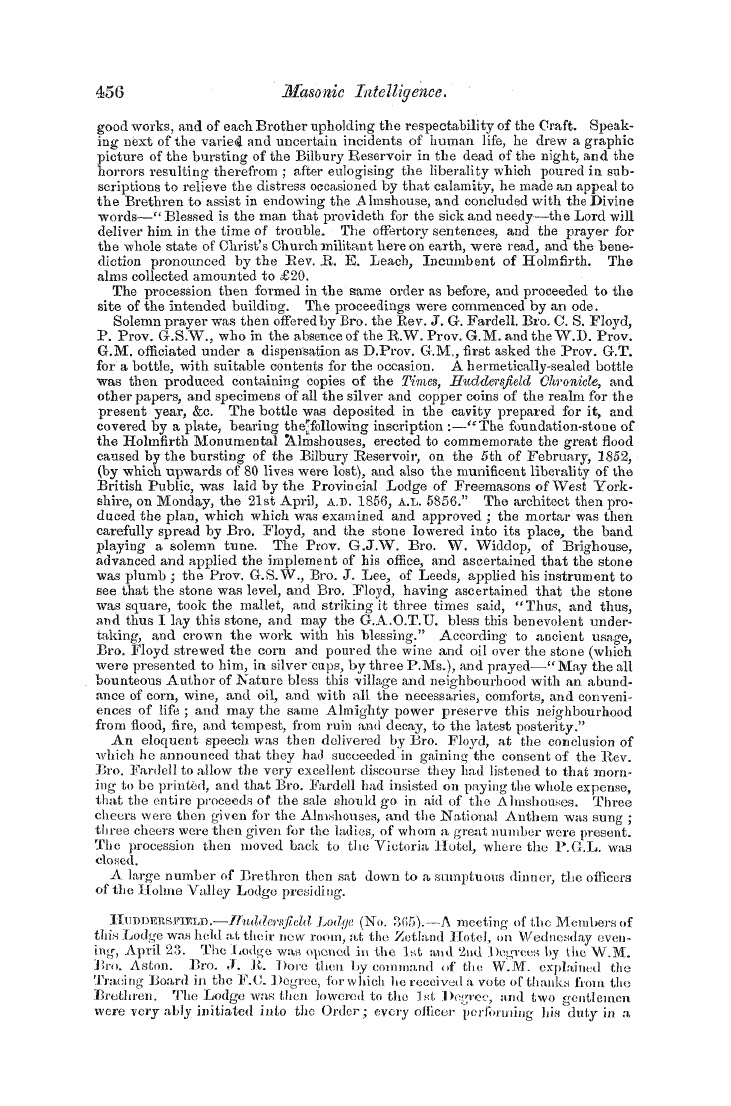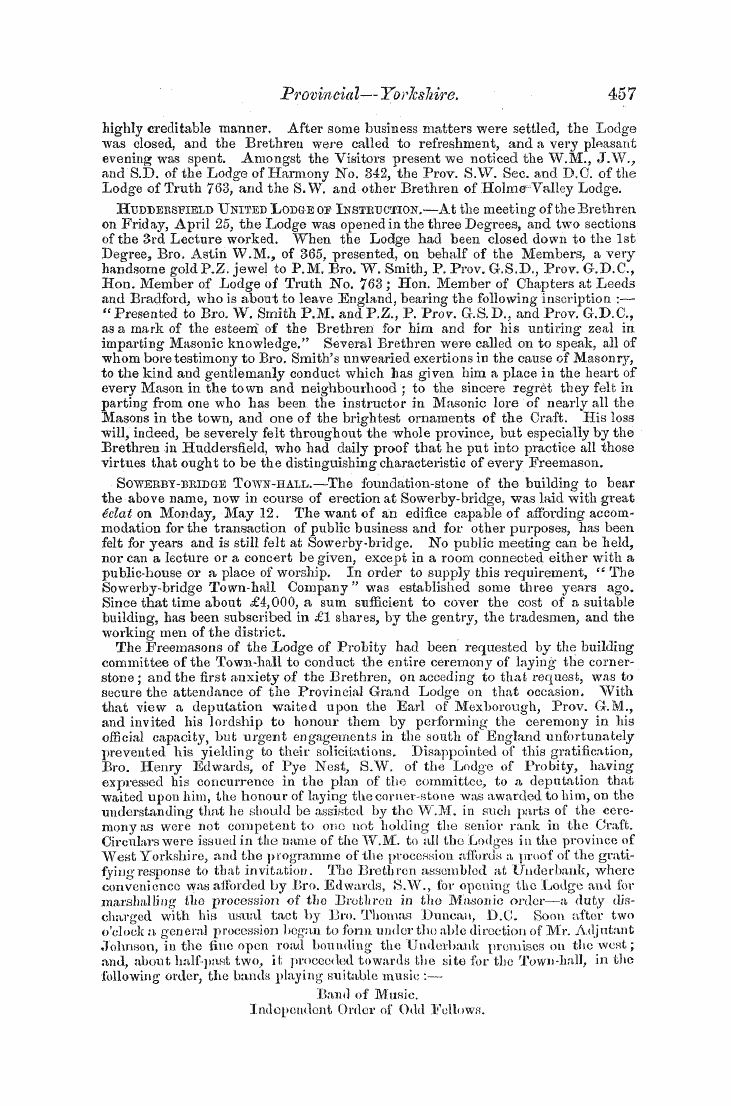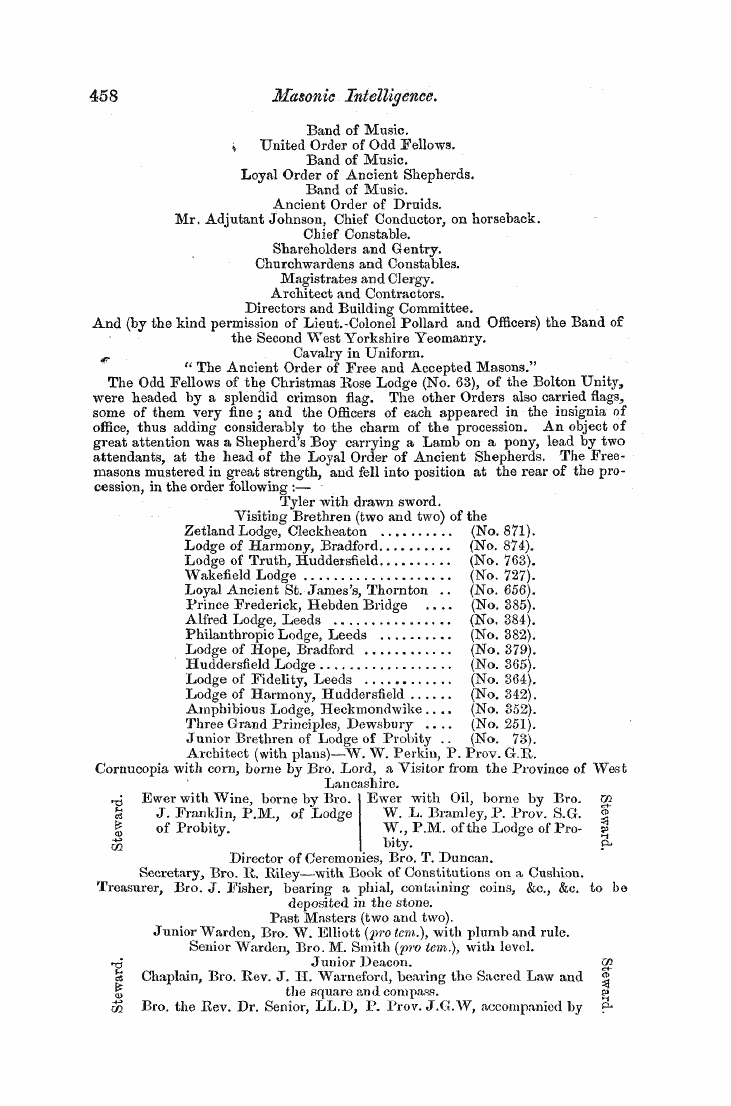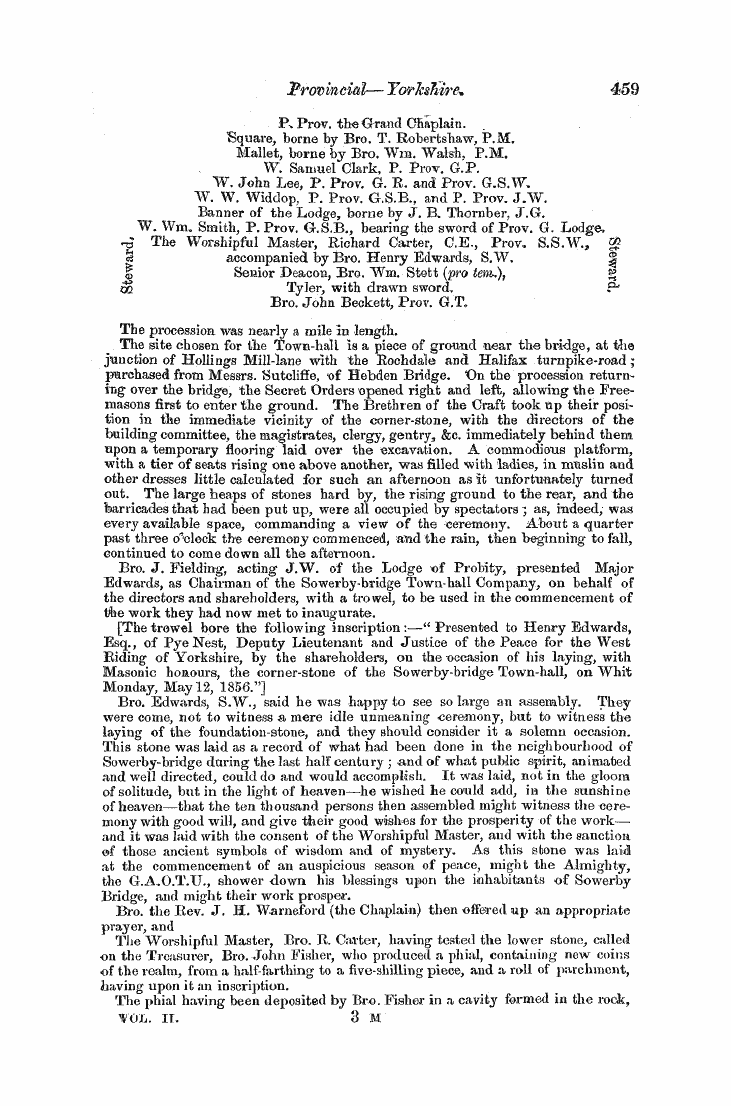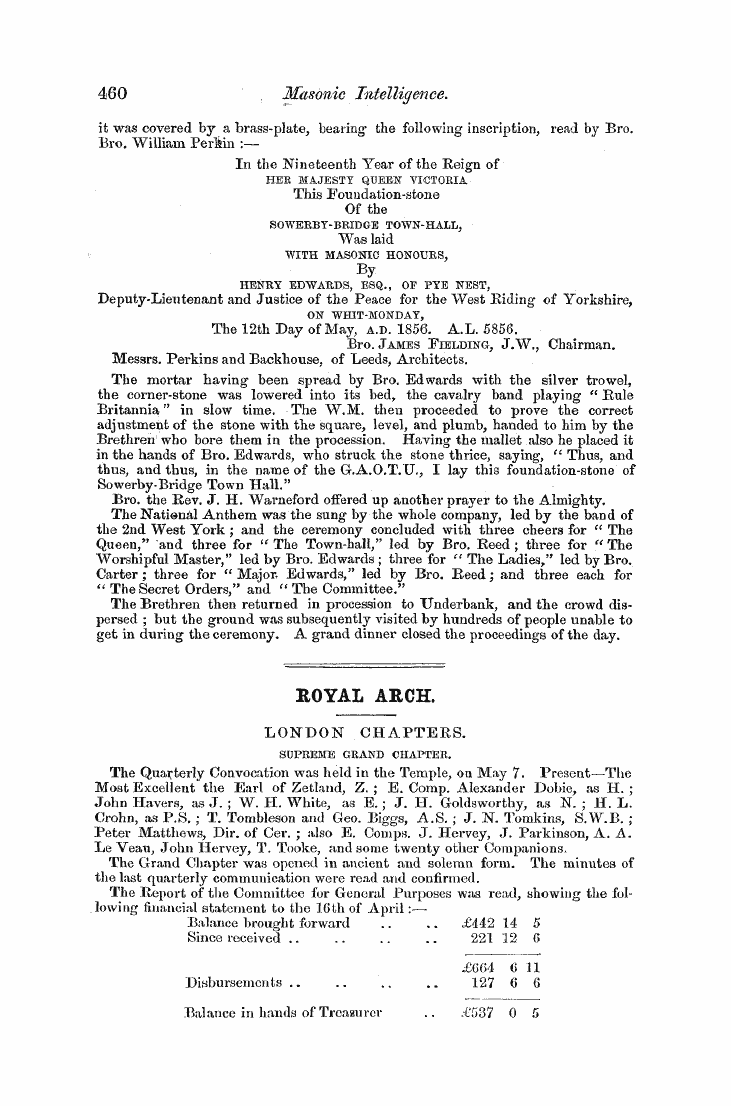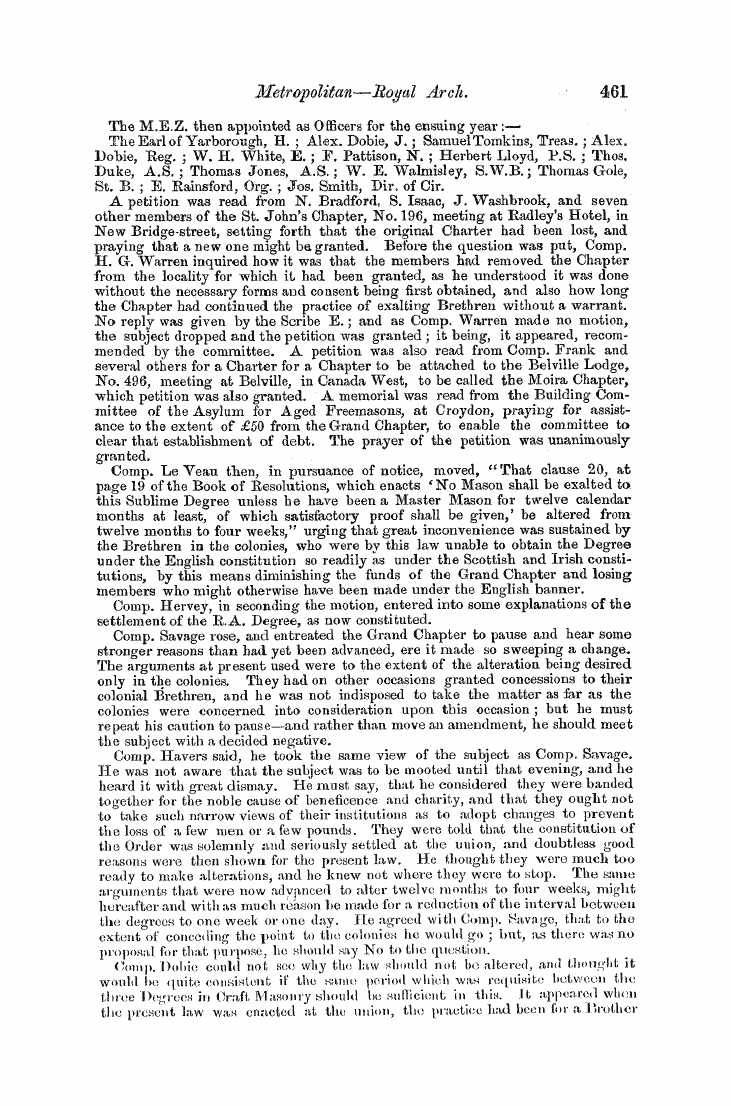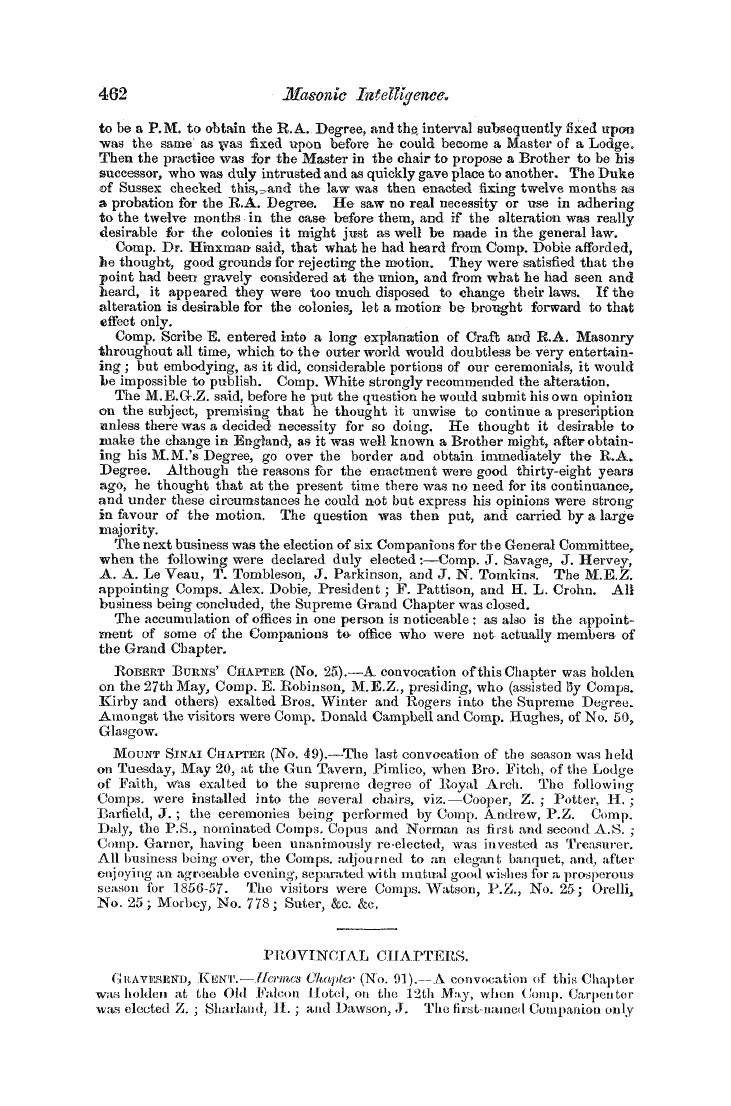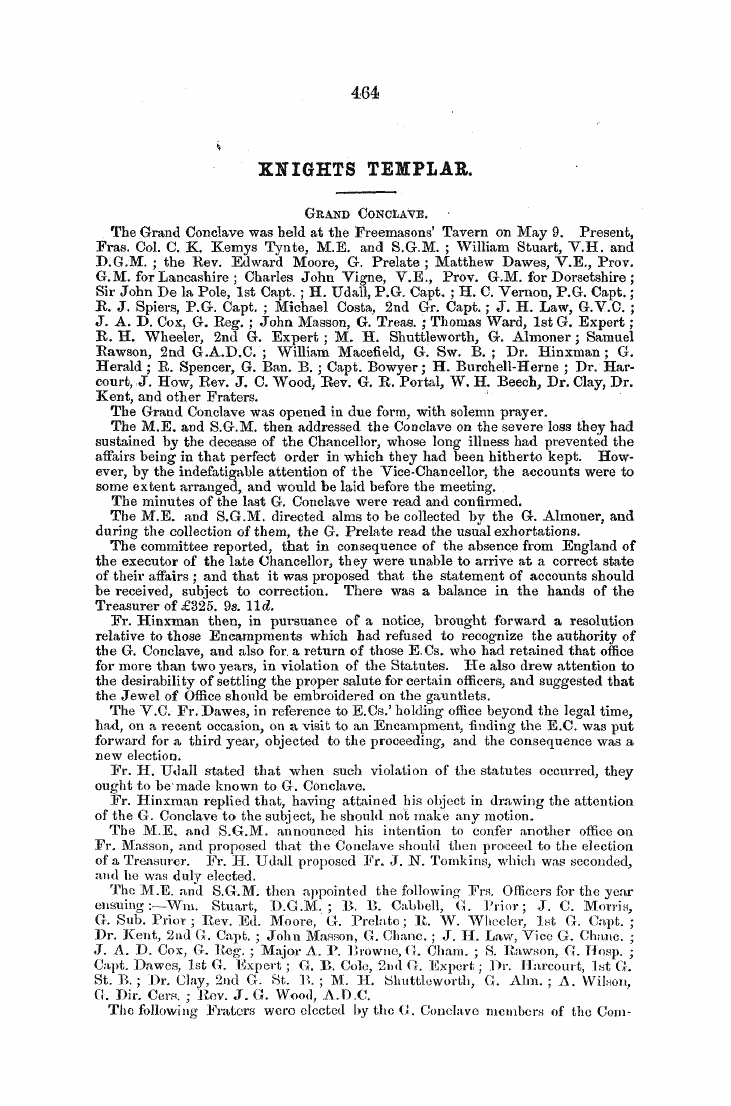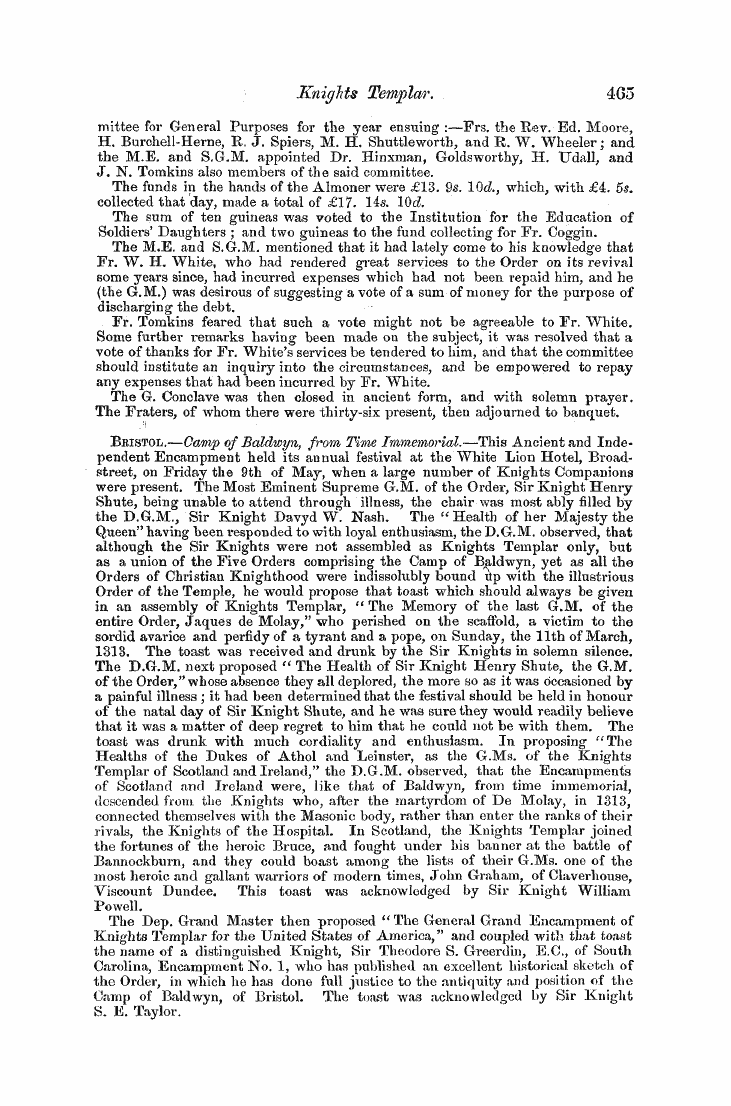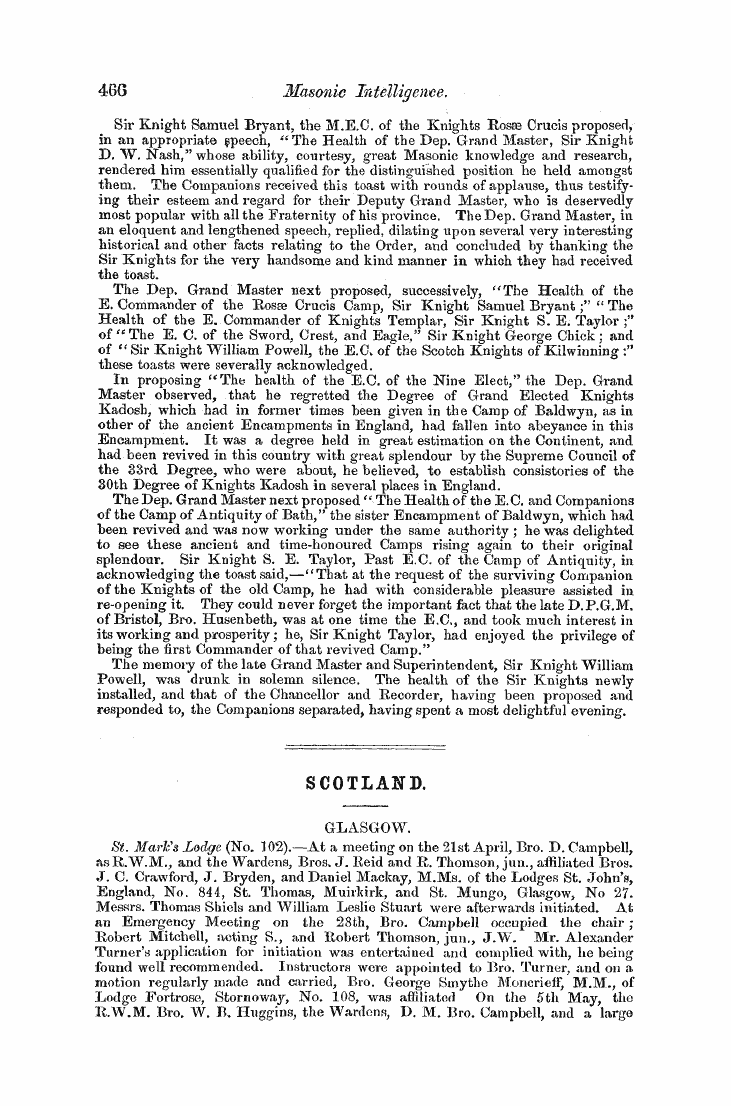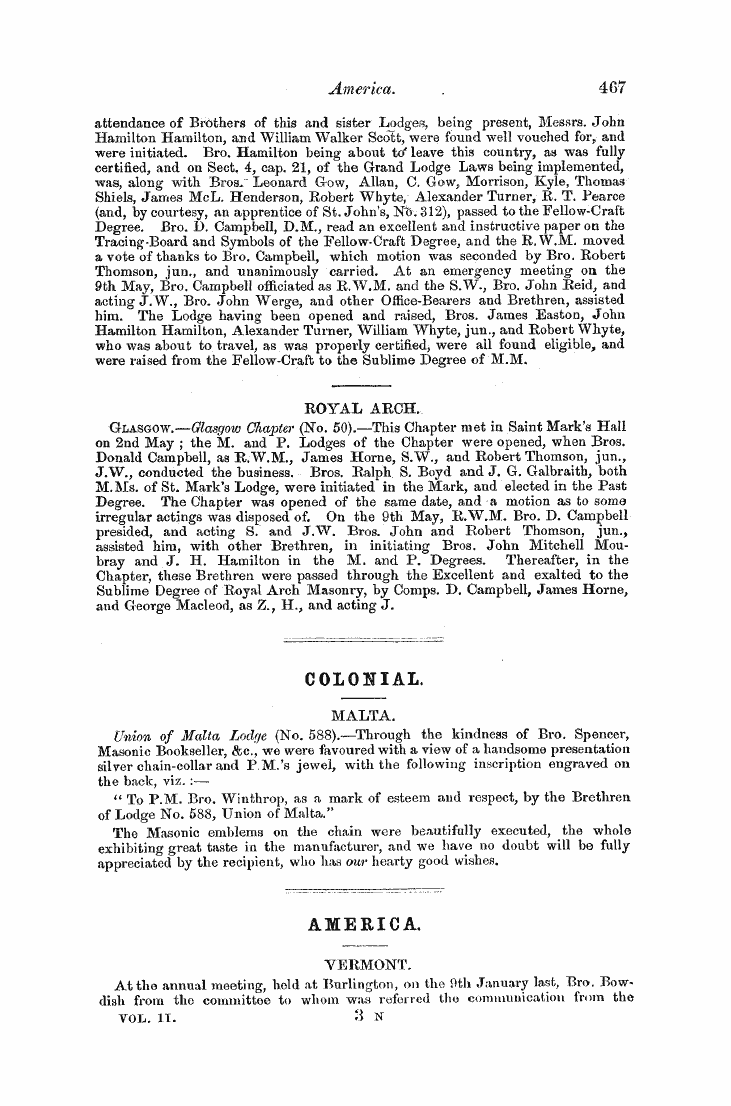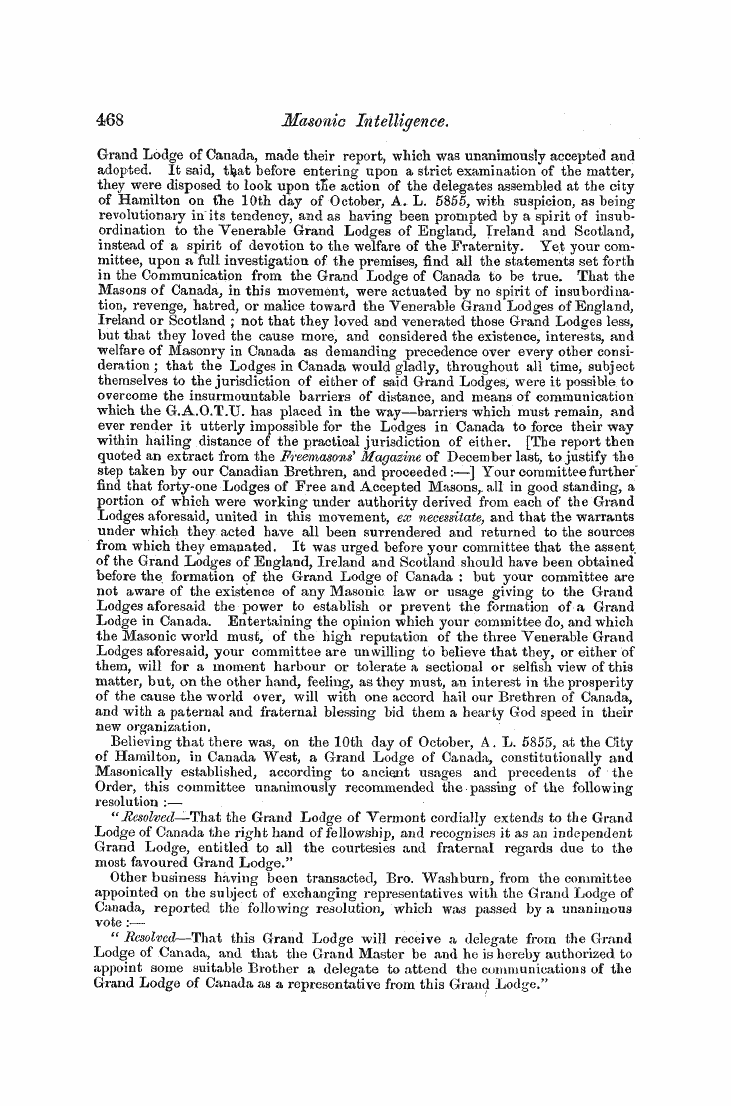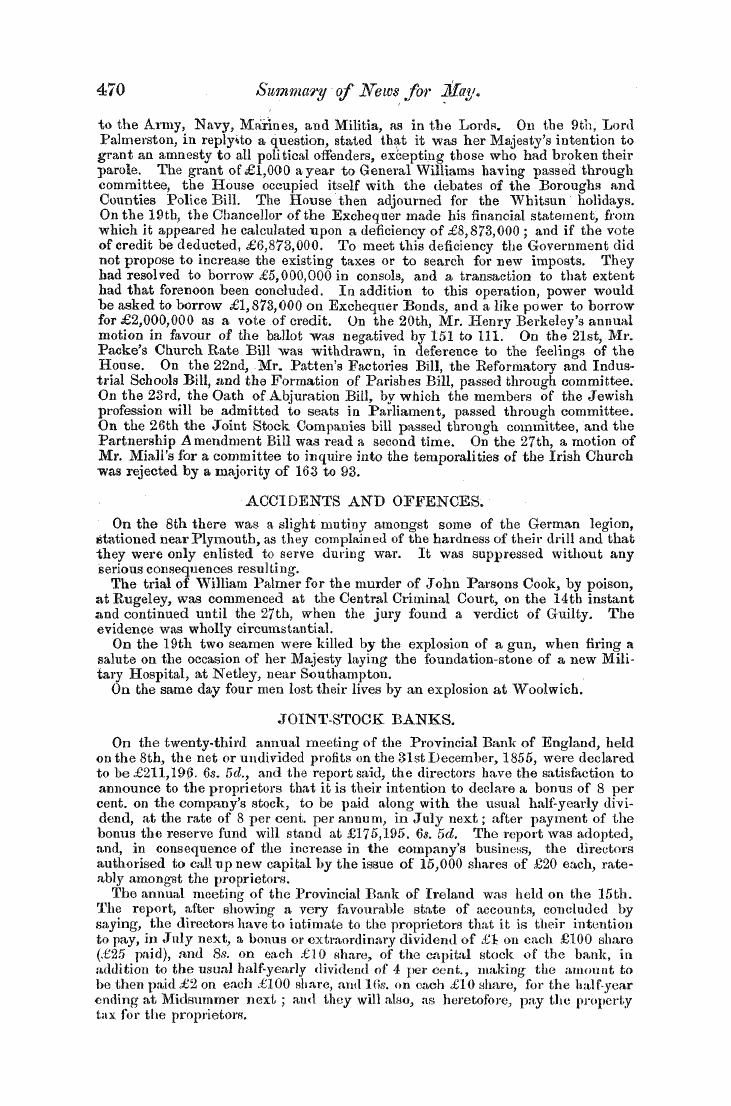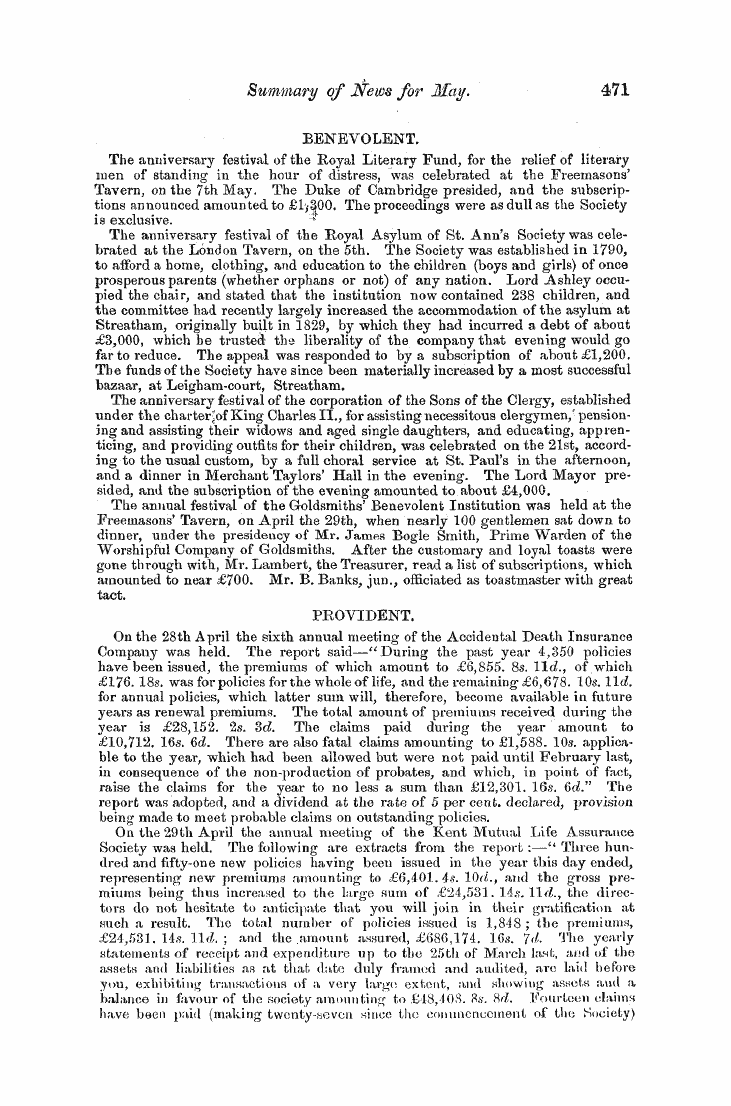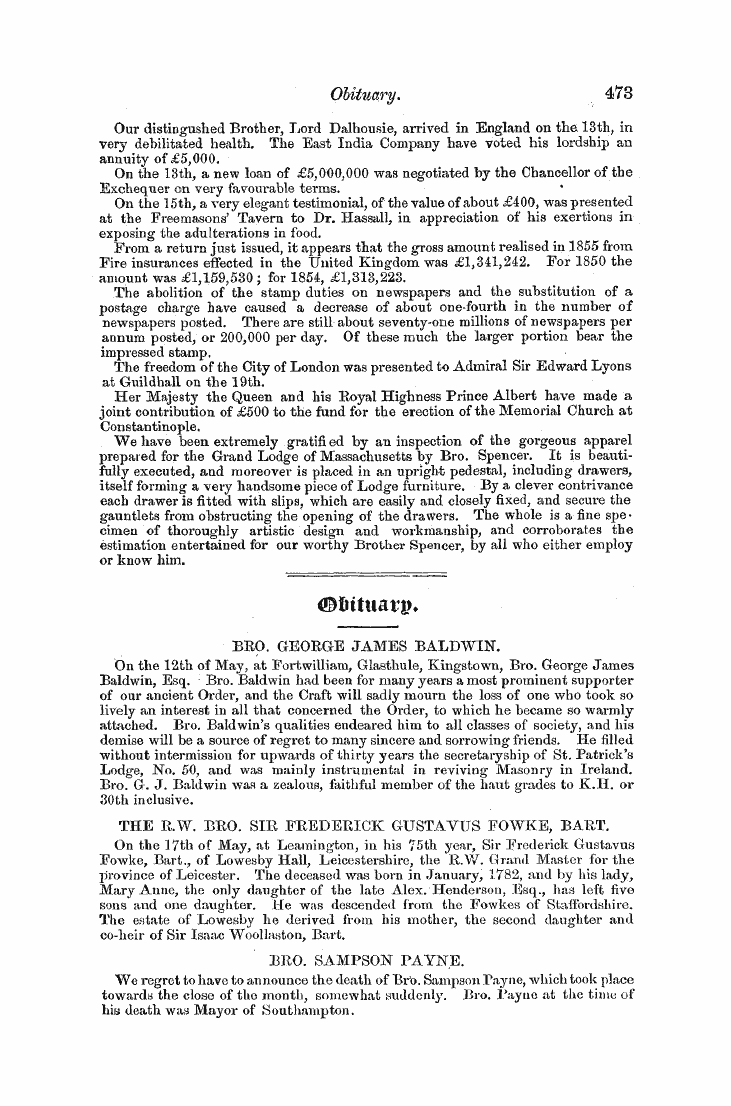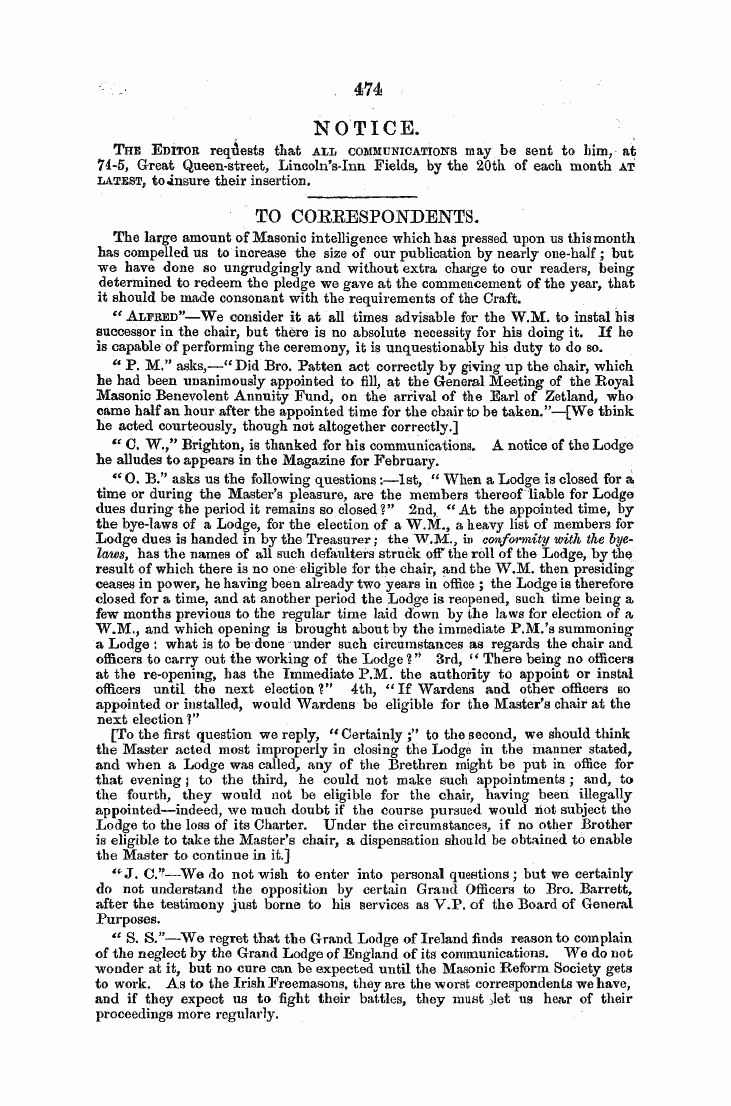-
Articles/Ads
Article Untitled Article ← Page 8 of 11 →
Note: This text has been automatically extracted via Optical Character Recognition (OCR) software.
Untitled Article
monument he erected to his memory , and still to be seen in the churchyard of St . Giles-in-the-Pields . About this time ( 1637 ) an unfortunate misunderstanding took place between Jones and the parishioners of St . Gregory , which
resulted in their appealing to the Commons' House of Parliament , from whence the complaint found its way to the House of Lords , with a declaration appended that the parishioners were entitled to redress , and that proceedings ought to be taken against the king ' s architect . The quarrel originated in this wise : —
St . Paul's was in a state of great dilapidation , and it being the wish of the king and of Archbishop Laud that the whole cathedral should be rebuilt , Inigo was instructed to perform the work . In order to accomplish this according to the magnificent design he had prepared , it was necessary that the adjoining church of St . Gregory should be totally removed ; and contrary to the remonstrances of the
local authorities , who wished to preserve their church , Inigo proceeded to demolish a portion of it , and then coolly informed the grumblers , that unless they themselves completed the work of destruction , " they should be laid by the heels . " This forms a portion of the accusation brought against him ; and it is worth mention , were it only as an illustration of the somewhat arrogant character of the
ambitious and powerful architect . The complaint brought Inigo before the House of Lords , and although he was successful in parrying the charge and thus gaining time , the decision was ultimately against him ; and he thus was obliged not only to abandon his noble work , but to see the very stones he had provided for it applied by the parishioners of St . Gregory in rebuilding what he had pulled down .
The last of Inigo ' s professional works was the chapel in the square of Covent-garden , which was erected by desire of the then Earl of Bedford , and completed in 1638 . It was originally built of brick , with Tuscan columns , and consecrated by Juxon Bishop of London . It was repaired by Lord Burlington in 1727 , but was totally destroyed by fire in 1795 , when the present stone building was erected on the original plan .
As we have already said , this was Inigo s last work , and with its completion his worldly prosperity may be said to have ended , for although he lived for many years afterwards , sound in mind and body , public attention had become absorbed by subjects of more vital importance to the welfare of the nation than admiration of the fine arts . Other and sterner duties occupied the mind of the king and his nobles than the encouragement of architecture ; that dread scourge
of kingdoms and bar to peaceful progress , civil war , had begun to spread its devastating hand over the country , draining its resources in men and money , and absorbing the very elements of social prosperity and improvement . A termination was put to all the public works in progress , and the idea of planning new ones , was , of course , out of the question . The most incredible revolutions took place amongst all classes of society . Every profession and trade not absolutely essential to the existence of the people became suddenly
Note: This text has been automatically extracted via Optical Character Recognition (OCR) software.
Untitled Article
monument he erected to his memory , and still to be seen in the churchyard of St . Giles-in-the-Pields . About this time ( 1637 ) an unfortunate misunderstanding took place between Jones and the parishioners of St . Gregory , which
resulted in their appealing to the Commons' House of Parliament , from whence the complaint found its way to the House of Lords , with a declaration appended that the parishioners were entitled to redress , and that proceedings ought to be taken against the king ' s architect . The quarrel originated in this wise : —
St . Paul's was in a state of great dilapidation , and it being the wish of the king and of Archbishop Laud that the whole cathedral should be rebuilt , Inigo was instructed to perform the work . In order to accomplish this according to the magnificent design he had prepared , it was necessary that the adjoining church of St . Gregory should be totally removed ; and contrary to the remonstrances of the
local authorities , who wished to preserve their church , Inigo proceeded to demolish a portion of it , and then coolly informed the grumblers , that unless they themselves completed the work of destruction , " they should be laid by the heels . " This forms a portion of the accusation brought against him ; and it is worth mention , were it only as an illustration of the somewhat arrogant character of the
ambitious and powerful architect . The complaint brought Inigo before the House of Lords , and although he was successful in parrying the charge and thus gaining time , the decision was ultimately against him ; and he thus was obliged not only to abandon his noble work , but to see the very stones he had provided for it applied by the parishioners of St . Gregory in rebuilding what he had pulled down .
The last of Inigo ' s professional works was the chapel in the square of Covent-garden , which was erected by desire of the then Earl of Bedford , and completed in 1638 . It was originally built of brick , with Tuscan columns , and consecrated by Juxon Bishop of London . It was repaired by Lord Burlington in 1727 , but was totally destroyed by fire in 1795 , when the present stone building was erected on the original plan .
As we have already said , this was Inigo s last work , and with its completion his worldly prosperity may be said to have ended , for although he lived for many years afterwards , sound in mind and body , public attention had become absorbed by subjects of more vital importance to the welfare of the nation than admiration of the fine arts . Other and sterner duties occupied the mind of the king and his nobles than the encouragement of architecture ; that dread scourge
of kingdoms and bar to peaceful progress , civil war , had begun to spread its devastating hand over the country , draining its resources in men and money , and absorbing the very elements of social prosperity and improvement . A termination was put to all the public works in progress , and the idea of planning new ones , was , of course , out of the question . The most incredible revolutions took place amongst all classes of society . Every profession and trade not absolutely essential to the existence of the people became suddenly




























































